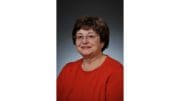Dr. Laura Pearson of Wellstar Health System spoke to the Courier about breast cancer awareness and the need for early detection.
Dr. Pearson is a breast oncologist and surgeon.
Asked to describe her role at Wellstar, she said, “My role is to be the medical director for the breast program at North Fulton Hospital.”
“I have been in that position since 2010. And basically my role is to help further the services for patients and their families and to make sure that any and all initiatives that need to be happening at the hospital for our breast patients is being addressed,” she said.
“In addition to that, I am also the the chair of the Cancer Committee which is for all of Wellstar,” she said. “And so in that role … I help facilitate the quality initiatives and programmatic things that we want to expand on within Wellstar as a whole.”
She said there are people in the trenches who implement the plans, but that she gets the opportunity to provide guidance for the programs.
The Courier asked Dr. Pearson what she thinks is the most important thing to convey to the public about breast cancer.
“First and foremost, the thing that I like to impress upon my patients, is that while breast cancer or having an abnormal breast issue is really, really scary, the good news in all of this is we’re actually really good at taking care of breast cancer,” said Pearson. “And so even if somebody is diagnosed with breast cancer, the likelihood of them getting through treatment and going on to live a long productive life is, is really good.”
“So that dovetails into the second part. Early detection is paramount for breast cancer,” she said.
“Mammograms do not prevent cancer, but they do find it early.” Pearson said. “And so breast awareness helps with that.”
“Having those tools for early detection is really the key to how people do when they develop breast cancer,” she said. “If there’s an issue, don’t let it go.”
How often should women be tested?
Asked at what age testing should begin, and how often tests should be done after that, Dr. Pearson said, “That actually depends upon who you talk to.”
“However, at the very least, a woman should be considering starting her mammograms at 40, and yearly, or every other year, depending upon the organization making the recommendations.”
“The American College of Radiology and the American Society of Breast Surgeons, amongst others, recommend starting at 40, and yearly, up until a reasonable life expectancy,” she said. “So not 100, necessarily, but if somebody is in relatively good health, they should be continuing to get their their mammograms and their breast screenings.”
She said the American College of Surgeons has a different recommendation for people of average risk. That organization recommends starting at 50, with mammograms every other year.
But Dr. Pearson said that their recommendations for starting at a later age only apply to people with no elevated risk factors such as family history of breast cancer, smoking, obesity or dense breast tissue.
What happens next if cancer is detected?
The Courier asked Dr. Pearson to describe the next steps if cancer is detected.
“It depends a little bit on the type of cancer but generally speaking, they’re going to most likely be recommended to have a meeting with somebody like me, a breast surgeon, to talk about their diagnosis and sort of overall treatment plan,” she said.
“What I tell my patients is that they are the captain of the team. But the surgeon’s role is to be the co-captain, in that while I do surgery, my job is also to get the rest of their team together and to make sure nothing falls through the cracks, though they would generally meet with a surgeon first.”
She said after first meeting with the surgeon, any finalization that would need to take place between the patient and other medical team members such as the medical oncologist or radiation oncologist would take place at North Fulton Hospital, where the patient would come in and meet with their entire team at once.
“So they get everybody’s expertise and their recommendations at the beginning,” she said. “But generally speaking, women will be at their surgeon first.”
She said the next steps would include further imaging, possibly MRI, to get more information, surgery, and then any other appropriate treatment.
Has COVID-19 affected the willingness of women to come in for mammograms?
Asked if there were a drop-off in number of women coming in for their mammograms due to the COVID-19 pandemic, Dr. Pearson said there was a period when testing was slowed down while Wellstar was putting its protocols for patient safety into place.
“Then we were basically back up to full speed,” she said.
Closing remarks
The Courier asked Dr. Pearson if there were any other things she’d like to say to readers.
“There are things that women and men don’t have control over in terms of their risk for breast cancer,” she said. “And then there are things that they do have control over.”
“And so it’s important for somebody to talk with their providers about what things they can do to make themselves healthier, to minimize the risks and put themselves in a position that if they were to develop breast cancer would give them the the best chance of doing well,” she said. “Things like being active, maintaining a good, healthy weight, not smoking, minimizing alcohol intake, getting their screenings and being self aware, are some of them.”
“That’s one of my big takeaways,” Pearson said. “There’s a lot of things women and men can do in terms of prevention, and overall, which actually also probably helps them prevent a myriad of other things like heart disease and stroke, which is much more common than breast cancer.”
“So they’re all still good for you. Women should not be scared, because they do have a lot of things that they have control over. And there’s a lot of good options if something were to develop.”





